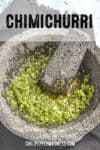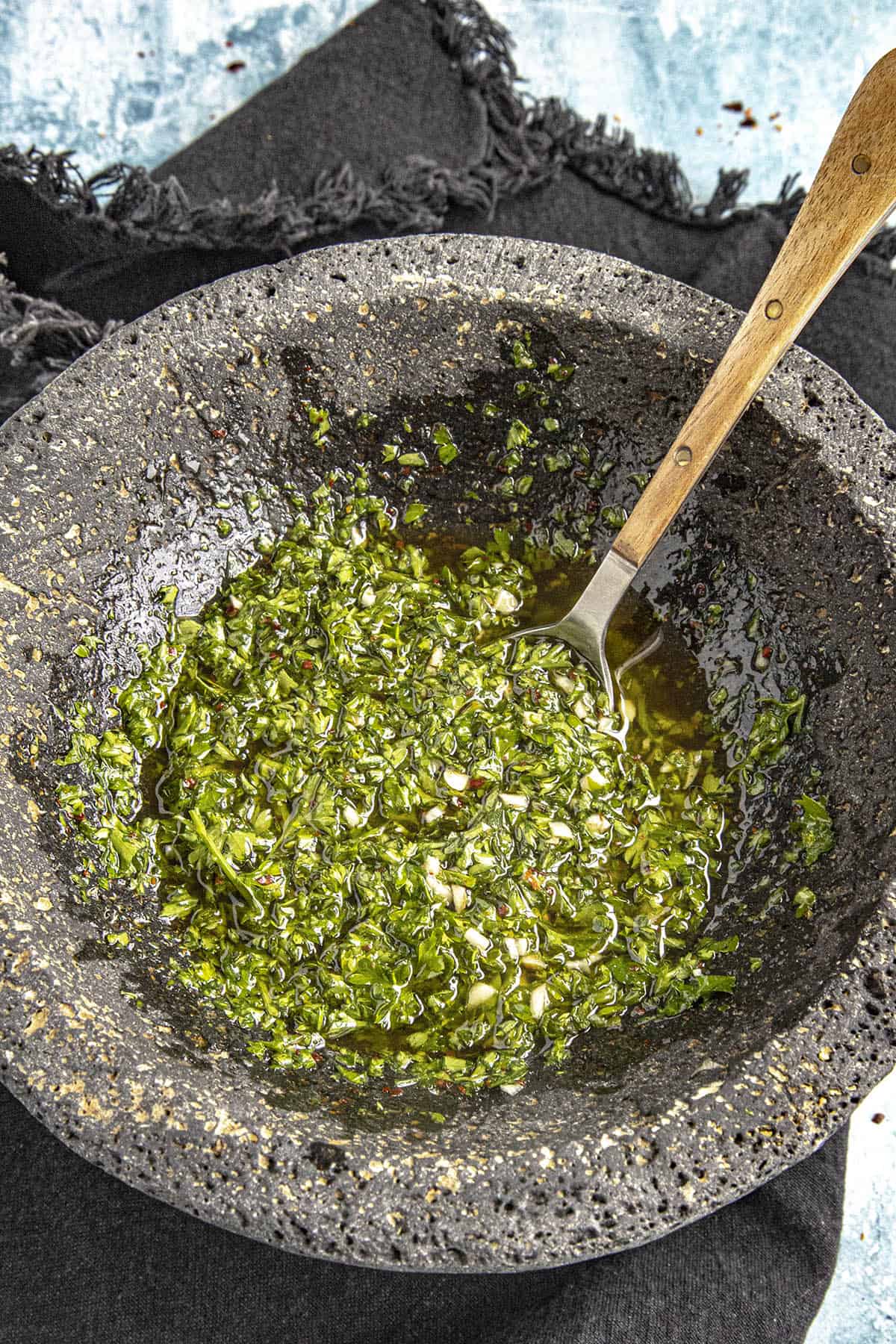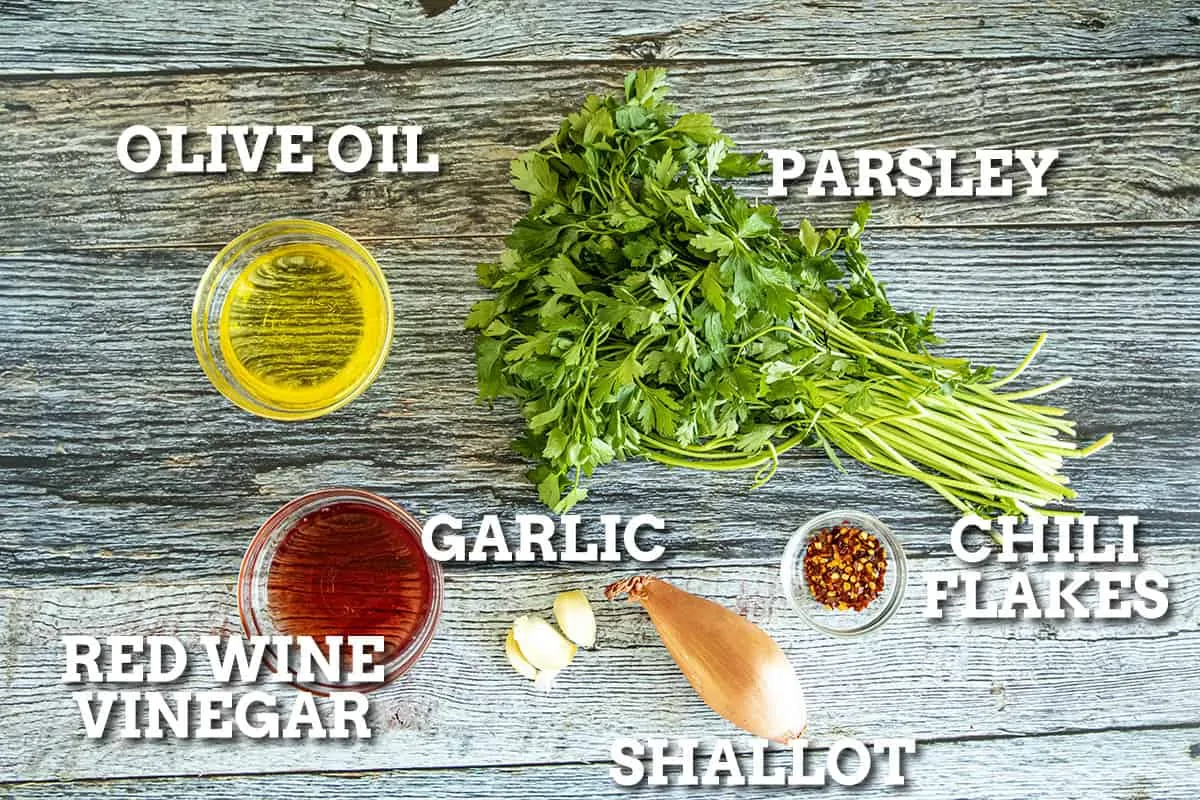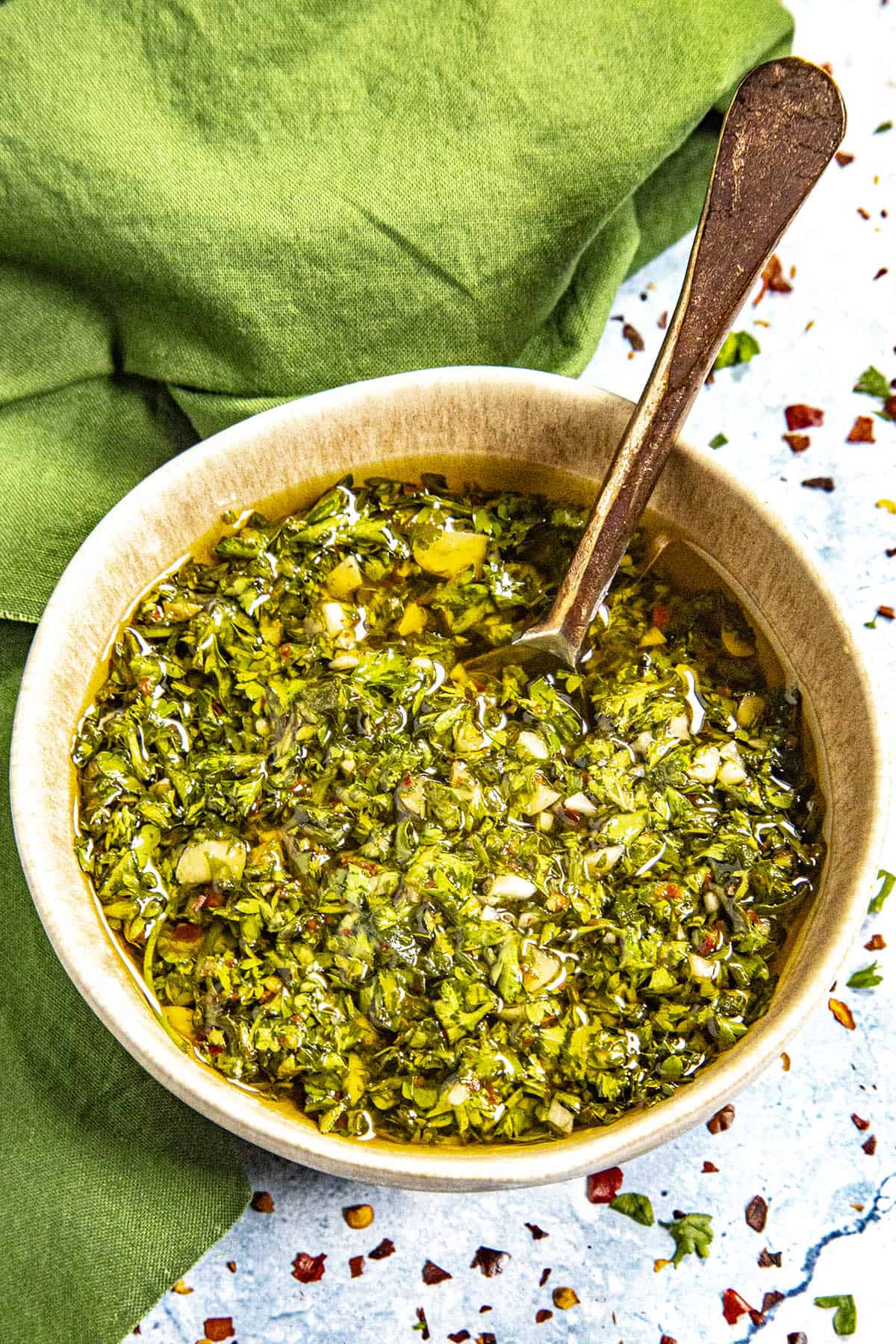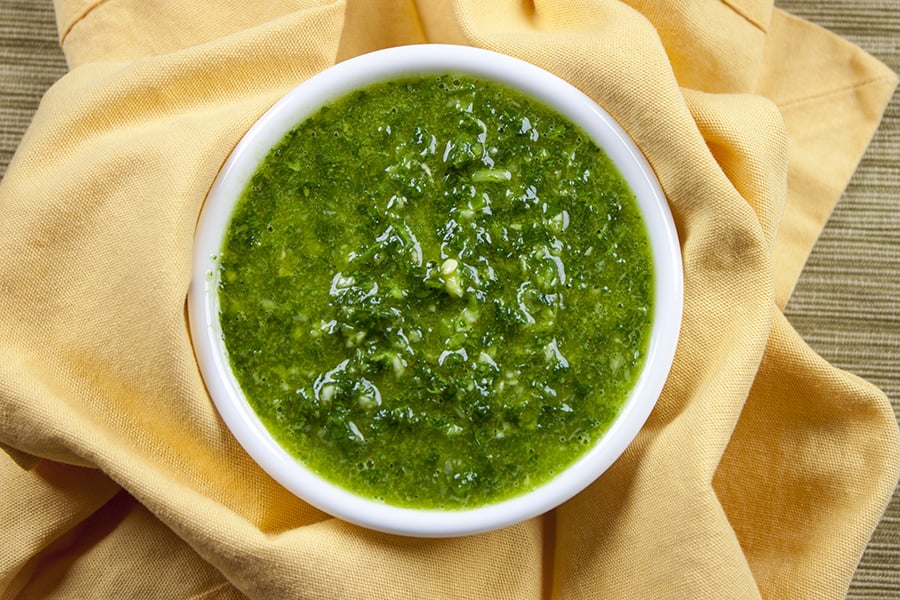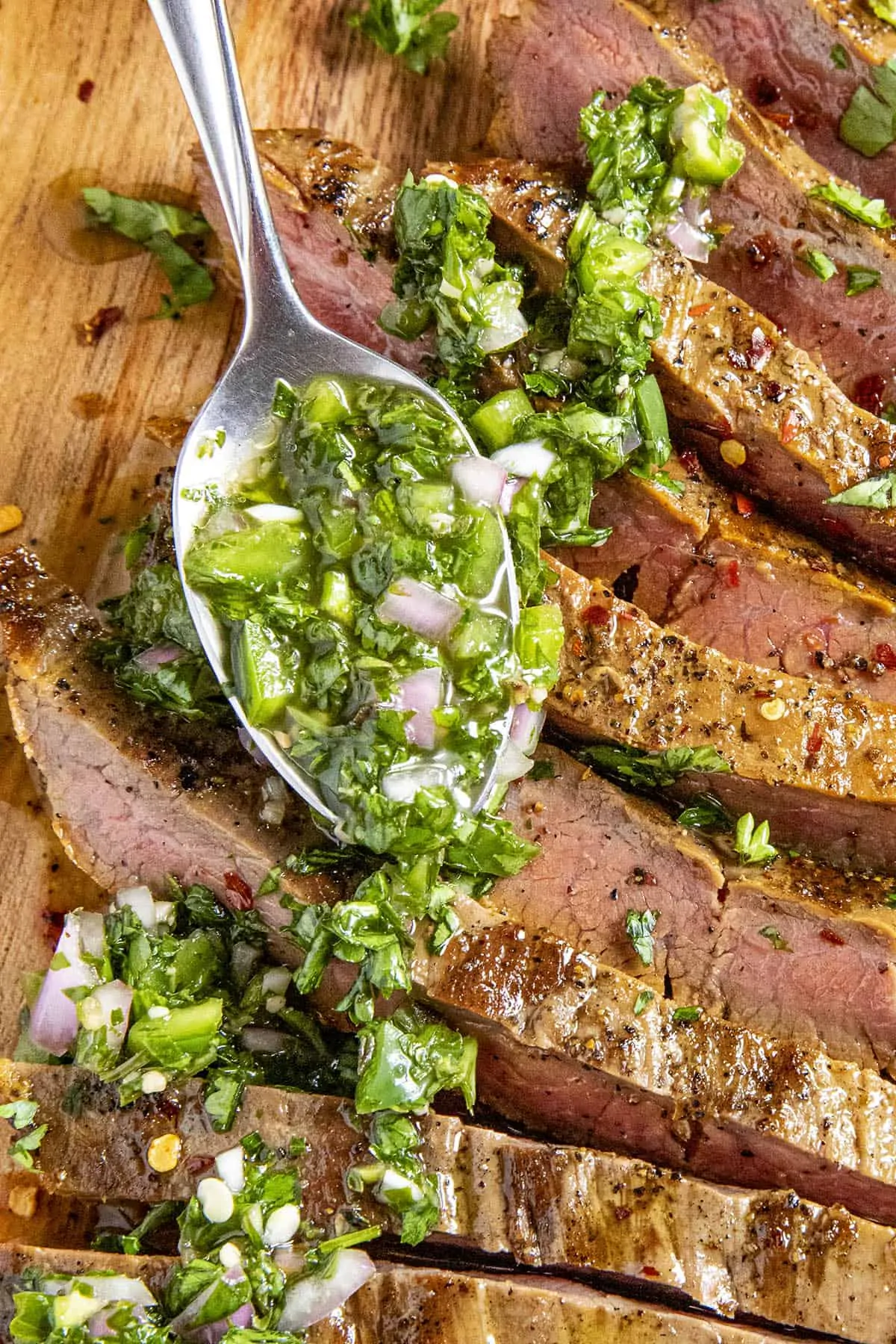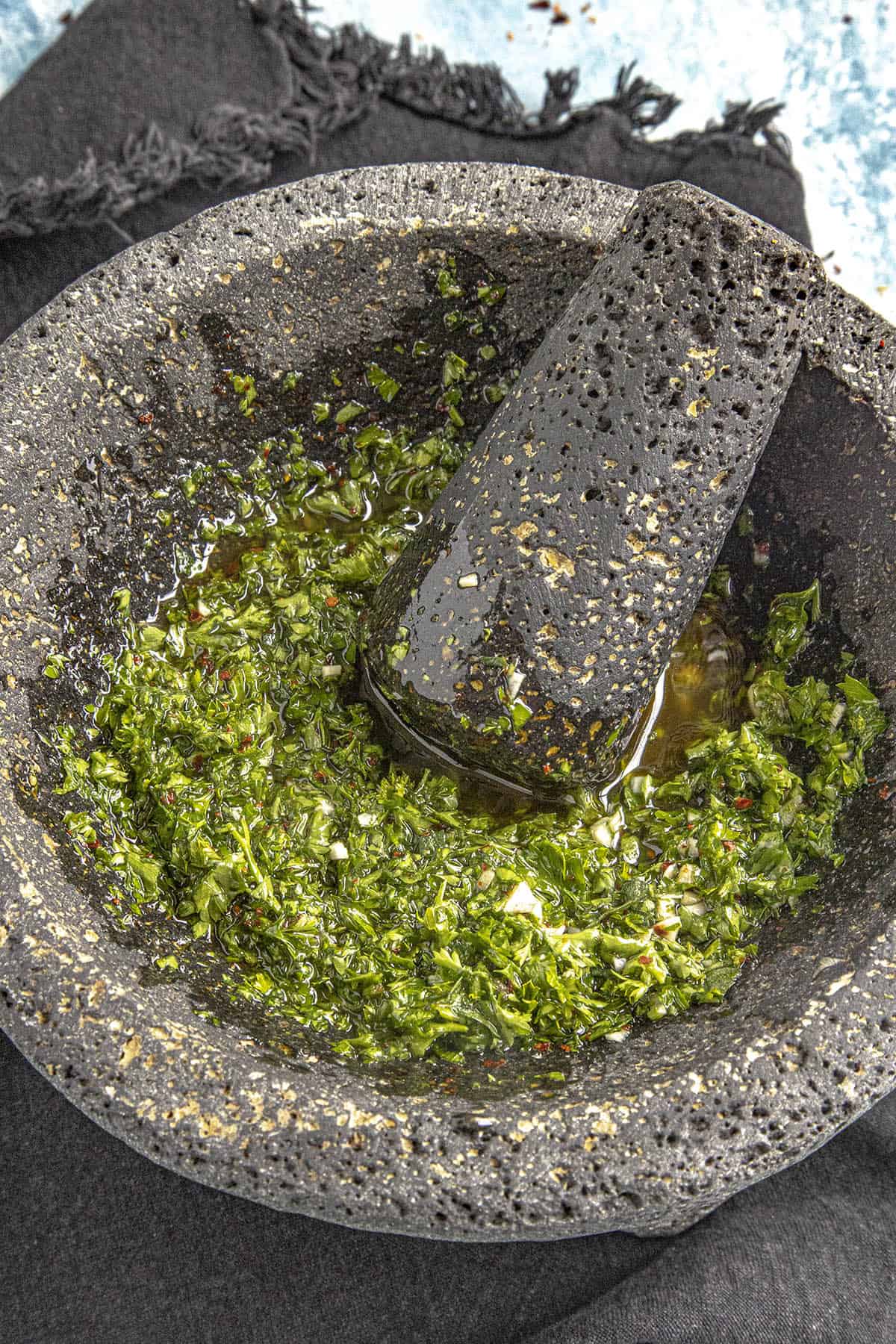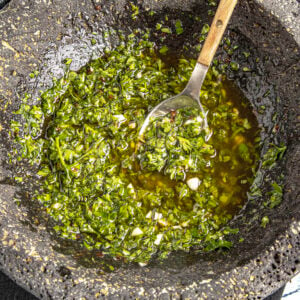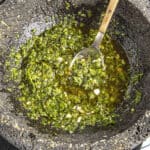What is Chimichurri?
Chimichurri is a combination of fresh parsley and other potential herbs with oil and vinegar and several other possible ingredients. It is an Argentinian recipe, though you will find variations by region. This is a simple recipe that focuses on fresh herbs, and it’s incredibly versatile and easy to make. You can whip this together in minutes and use it in so many ways. I consider it more of a fresh herb condiment, but if you want to serve it as more of a chimichurri sauce, like a chimichurri dipping sauce, you can process it in a food processor until very smooth. It’s a very personal recipe, varying from cook to cook, though it always includes a lot of parsley. Chimichurri adds a pop of freshness to your meals, along with a touch of tart from the vinegar and a light oily texture that clings to your taste buds and lingers. Some recipes include shallot in the mix, some bay leaf, some include other seasonings, such as paprika. The deviations are common, though none can take away from the underlying character that this sauce brings. Let’s talk about how we make chimichurri, shall we? That’s it, my friends! If you enjoy this recipe, I hope you’ll leave a comment with some STARS. Also, please share it on social media. Don’t forget to tag us at #ChiliPepperMadness. I’ll be sure to share! Thanks! — Mike H.
Garlic. I love lots of garlic. Fresh Parsley. Flat leaf parsley. This is the primary component of chimichurri. Some people like a mix of parsley and cilantro. Fresh Oregano. You can use dried oregano, but I prefer fresh. Shallot. Optional, but a personal favorite. Finely chopped or minced. Red onion is a nice touch, too. Red Pepper Flakes. For a touch of heat. You can also use fresh minced peppers, like jalapeno or serrano. Red Wine Vinegar. Olive Oil. Corn oil (or canola oil) is more traditionally used, though many cooks now opt for more flavorful extra virgin olive oil. I know I do. Salt and Black Pepper. To your personal tastes.
Some recipes call for a bit of lemon juice or lime juice as well. Feel free to add a bit of that in if you’d like a pop of citrus. I prefer a fine chop for a nicely consistent chimichurri for serving. However, you can also use a blender or food processor and gently pulse the ingredients to combine. Mix and just for salt and pepper to taste, and any other ingredients. Want more garlic? Go for it! At this point you can serve your chimichurri as-is, and it will be delightful, or you can toss it into a food processor and process to form more of a sauce-like texture. Scrape down the sides, then process until you achieve your desired consistency. Boom! Chimichurri sauce for you. I have done it both ways and enjoy each version. Here is what it looks like processed as more of a sauce, which is better for brushing onto meats while they are grilling. It isn’t quite as traditional this way, compared to authentic chimichurri sauce, but it is still tasty. Such a great recipe. It is also completely at home with fish or poultry, like chimichurri chicken. While it is often served room temperature as a dipping sauce in a small bowl, a finishing condiment, or a sauce, chimichurri also is an ideal marinade, so if you’d like, you can whip up a double batch, use half for your marinade and keep half for your finished topping. Spoon it over grilled vegetables to really spice them up. Super delicious! Let me know what you make with it. I hope you enjoy it! You can also freeze chimichurri for 3 months or longer. I like to use ice cube trays to freeze small portions, then transfer them to a freezer safe bag.
Try Some of These Other Popular Recipes
Red Chimichurri (Chimichurri Rojo) Zhug Chermoula Salsa Verde Ajvar Green Harissa Chimichurri Steak
NOTE: This recipe was updated on 12/14/20 to include new information and photos. It was originally published on 4/5/17.
